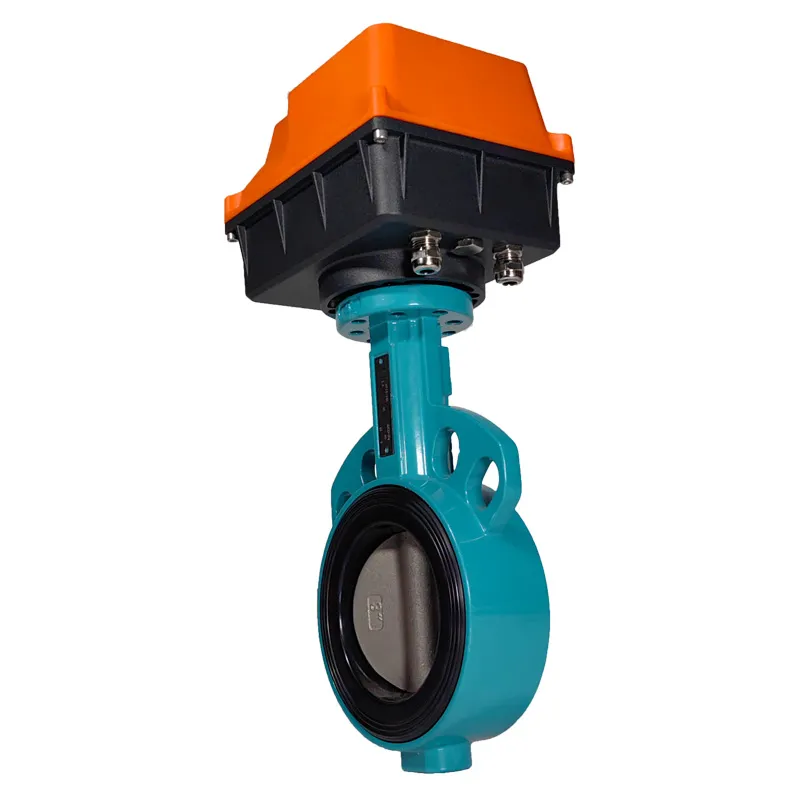Avoid your inquiry is delay response, please enter your WhatsApp/WeChat/Skype along with the message, so we can contact you at the very first time
We will reply you within 24 hours. If for urgent case, please add WhatsApp: +8613188899036, or WeChat: 0531-87968777. Or call 0531-87968777 directly.
* We respect your confidentiality and all information are protected. We will only use your information to respond to your inquiry and will never send unsolicited emails or promotional messages.
I’ve seen many engineers struggle with valve selection, often unsure about which butterfly valve type would best suit their specific needs. This confusion can lead to costly mistakes and system inefficiencies.
The three main types of butterfly valves are concentric, double-eccentric, and triple-eccentric. Each type offers distinct advantages in terms of sealing performance, pressure handling, and application suitability, helping engineers make informed decisions for their projects.

Electric actuated butterfly valve
As a valve manufacturer with years of experience, I’ve helped countless clients navigate these choices. Let me break down each type and show you how to make the right selection.
Every day, I get calls from clients asking about butterfly valve applications. The variety of uses might surprise you, but there’s one that stands out above all others.
Butterfly valves are most commonly used in water treatment and distribution systems, HVAC applications1, and process industries where large flow control is needed with minimal space requirements.
One of my most memorable projects involved installing a 48-inch butterfly valve in a major water treatment facility. The client needed a solution that could handle high flow rates while maintaining precise control. We selected a double-eccentric butterfly valve that not only met their flow requirements but also provided excellent sealing performance and reduced maintenance needs.
| Application | Valve Type | Key Benefits |
|---|---|---|
| Water Treatment | Concentric | Cost-effective, Simple operation |
| HVAC | Double-eccentric | Better sealing, Lower torque |
| Process Industry | Triple-eccentric | Zero leakage, High pressure |
I often encounter confusion when clients try to choose between pinch valves and butterfly valves. The differences are significant and can greatly impact system performance2.
The main difference lies in their operating mechanism: pinch valves use flexible sleeves that are compressed to control flow, while butterfly valves use a rotating disc. Each design serves specific applications better than the other.
| Feature | Pinch Valve | Butterfly Valve |
|---|---|---|
| Flow Path | Unobstructed | Partially obstructed |
| Maintenance | Simple sleeve replacement | More complex |
| Cost | Higher initial cost | More economical |
| Applications | Slurries and abrasive media | Clean fluids |
Last year, I worked with a mining company that was struggling with frequent valve failures in their slurry pipeline. They were using butterfly valves, but after analyzing their needs, we switched to pinch valves. The result was a significant reduction in maintenance costs and improved system reliability.
In my experience, choosing between plug valves and butterfly valves often comes down to specific application requirements and space constraints3.
Plug valves use a cylindrical or tapered plug that rotates to control flow, while butterfly valves use a disc that rotates on a shaft. Each design has its own advantages in different situations.
| Characteristic | Plug Valve | Butterfly Valve |
|---|---|---|
| Space Requirements | Larger | Compact |
| Cost | Higher | More economical |
| Flow Capacity | Lower | Higher |
| Maintenance | More complex | Simpler |
After years of working with various valve automation systems, I’ve seen firsthand how electric butterfly valves revolutionize flow control operations.
Electric butterfly valves combine the traditional butterfly valve design with an electric actuator, enabling automated control and remote operation4 capabilities for improved efficiency and precision.
| Feature | Benefit |
|---|---|
| Automation | Reduced labor costs |
| Remote Control | Improved safety |
| Position Feedback | Better accuracy |
| Programmable | Customizable operation |
Butterfly valves come in three main types – concentric, double-eccentric, and triple-eccentric – each serving specific applications with varying degrees of performance and reliability. Understanding their differences and applications is crucial for making informed selection decisions.